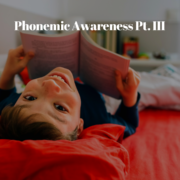Tough Conversations: A Tool for Parents, Part I

The “Courageous Conversations Compass,” a tool for ensuring that conversations around race and culture are productive in the workplace, was designed and shared by Glenn Singleton and Curtis Linton to promote courageous yet respectful dialogue. Public school personnel, especially Montgomery County Public School teachers, are probably familiar with both Courageous Conversations and Singleton and Linton’s compass. I personally have encountered instruction or reference to the compass on several instances during professional development classes and trainings, staff meetings, and parent conferences.
What began as a tool for the education realm has evolved into a helpful resource for several different types of conversations requiring courage, honesty, and perspective-taking. For struggling parents, an understanding of the compass and the philosophy behind its methods could certainly help facilitate communication with their teens.
What is the compass?
The compass, pictured below, is a visual, symbolic reference point that participants use to assist in communicating when conversations and viewpoints are not only difficult, but divergent. The four points of the compass, which help to identify from which perspective a participant is entering the conversation, are moral, intellectual, emotional, and relational. When we speak to others, especially about controversial or deeply personal topics, we typically go into the conversation with a certain mindset. The axis from which we enter a conversation depends on our experiences, values, beliefs, and opinions.
Additionally, we may enter a conversation from a combination of two or more points on the compass; it all depends on our thought processes pertaining to the specific topic of discussion. For example, on the very relevant topic of violence in schools, the discussion can quickly morph into a debate, which can then digress into an all-out argument. The reason that a controversial conversation like this would escalate quickly is because participants are entering the conversation from several different points on the compass.
For instance, a family member of a victim of gun violence would likely enter the conversation from an emotional standpoint—the topic resonates with their feelings because of their personal experiences. These feelings will conflict with or push back against a person who enters the conversation on the intellectual axis because it is hard to separate logic and emotion objectively. Therefore, the person who enters from an intellectual standpoint may try to use statistics, data, or trends to argue that guns do more to protect or defend people than to hurt them. However, this is a futile attempt for the intellectual if trying to persuade or counter a person’s emotional viewpoint. Likewise, people entering from the emotional axis will tune out the statistics—a statistic does not account for their lost loved one.
While this is just one example of how we enter the compass, the true value of the conversation strategy is that it allows us to recognize and reflect on why we may converse, debate, or argue the way that we do. It also allows us to gauge how and why another person would express themselves in such a vastly different way. The compass allows us to see, not only where we are coming from, but where the “other side” is coming from. At the root of this method is a deeply reflective practice in perspective-taking. The compass shows us that neither opinion is incorrect or invaluable; instead, it highlights why we disagree when it comes to such contentious topics. So how can we utilize this tool when speaking with our teens? Read ahead to learn how to implement methods for productive conversations using the compass.









